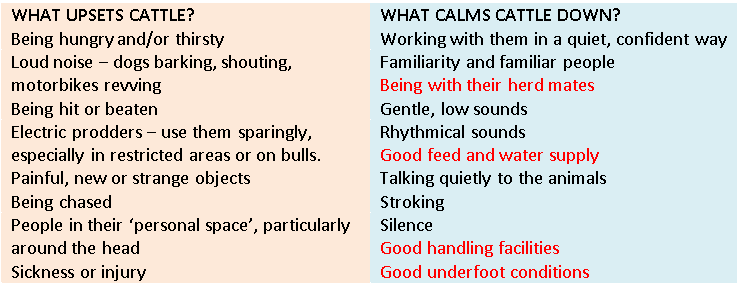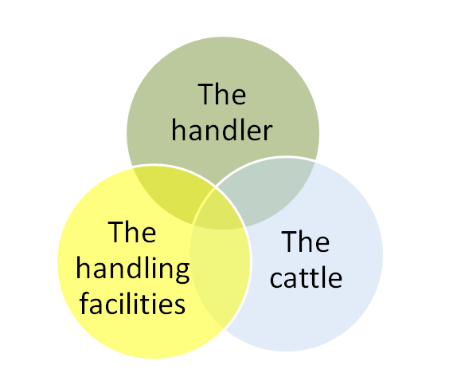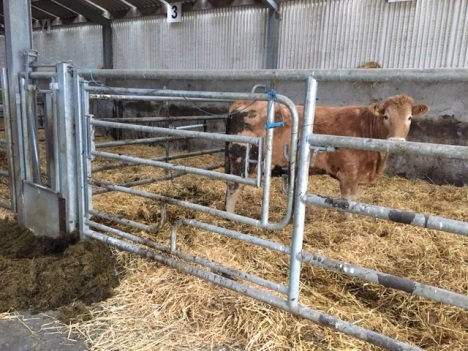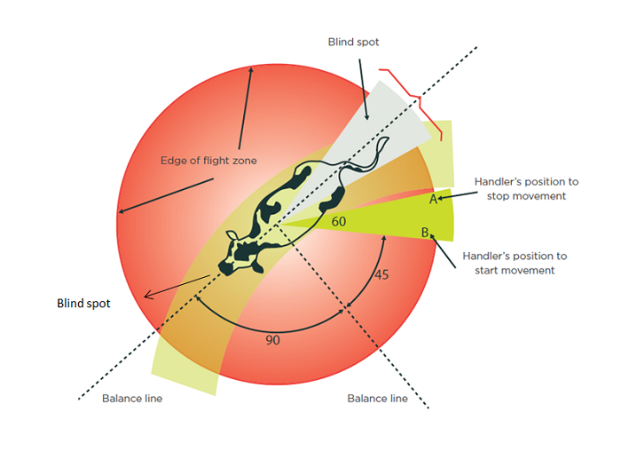19 May 2022
Safely Handling Animals on a Beef Farm – Factors to Consider

Bernadette Earley, Noeleen Brereton, Teagasc Grange Researchers set out general guidelines that all persons should take into consideration to reduce the likelihood that an animal will behave in an unpredictable or aggressive way and thereby endanger either people or other animals nearby.
“HSA data shows between 2012-2021 livestock were associated with 19% of the total fatalities that occurred. Within that fatalities associated with attacks by cows with calves accounted for 32%, being knocked over by cattle 24%, attacked by bull 18%, attacked by cattle 16%, and other reasons 10%” says Francis Bligh, Teagasc Health & Safety Specialist
Ensure that proper equipment and facilities are available for housing and handling the type of animals on the farm with special attention to:
- good housekeeping practices;
- equipment, fencing and gates that are able to restrain animals safely for general maintenance or health care;
- walking or working surfaces that are even and finished or constructed to prevent slipping under wet conditions;
- even and diffused lighting; and,
- alleys and chutes that are wide enough for animals to pass but not to turn around.

Recognising Danger Signs
Agitated cattle often bellow loudly and paw the ground with their hooves. The head and tail positions of cattle also give clues as to the animal’s state of mind. Be on the lookout for these danger signs.
Background-Animal Characteristics and Behaviour
The points below are provided for information purposes only and may help those handling large animals to understand why certain precautions are necessary.
Animal Vision
Stockpersons should be aware of the limitations of vision of the particular animal that they are working with. Animals may have:
- colour blindness;
- poor depth perception;
- sensitivity to contrasts, which may cause them to balk or hesitate at sudden changes in lighting (shadows), colour or texture;
- sensitivity to distractions or sudden movement because of wide angled vision;
- a natural tendency to move from dimly lit areas to lighter areas;
- blind spots where they cannot see a worker.
The three main themes with an impact on risk and safety during livestock handling

Tips for Handling Animals
Keep animal calm – Calm animals are easier to move and load. When animals become agitated, it takes up to 30 minutes for them to calm down.
Move animal at a walk or a trot – Injuries from falls and bruising increases when animals run into gates and fences
Maternal Instincts and Territorial Behaviours
Livestock with young exhibit a maternal instinct. They are usually more defensive and difficult to handle. Most animals have a strong territorial instinct and develop a very distinctive attachment to certain areas such as pastures, buildings, water troughs and worn paths. Forcible removal from familiar areas can cause animals to react unexpectedly. Similar problems occur when animals are moved away from feed, separated from the herd or approached by an unfamiliar person.

Install calving pens which are designed to protect livestock handlers (farmers, vets, relief workers etc)
Approaching Animals
Most animals, like humans, have a comfort zone. The illustration below is specific to cattle but the principles apply generally to other animals as well. A comfort or flight zone can be used to effectively move cattle and other animals. This works best when the handler works at the edge of the flight zone. These zones will vary from animal to animal and can be anywhere from five to twenty-five feet. Deep invasion into the flight zone may cause panic and confusion. Learning the principles of using the flight zone will allow a handler to move the herd safely.
The animal’s “point of balance” is at it’s shoulder. Cattle will move forward if the handler stands behind the point of balance. They will back up if the handler stands in front of the point of balance.
The “flight zone” is the animal’s personal space, and the size of the flight zone is determined by the animal’s wildness or tameness.

Bulls
Bulls are dangerous – but, just how dangerous are they?
- Bull attacks account for over 27% of all livestock fatalities on farms.
- Only 1 in 20 victims survives a bull attack.
- Most bull attacks occur in stockyards or open fields.
- Bulls have a “pecking order” and may bolt to avoid a more dominant bull.
- Breeding season is a high-risk time for bull attacks.
Safety tips:
- Avoid unnecessary exposure to bulls.
- Work with another person.
- Be aware of a bull’s position at all times.
- Know your escape route.
Separation from the herd may cause anxiety and unpredictable behaviour
Illness or injury
- May cause unpredictable behaviour.
- Kick toward injured side.
Calving
Cows can be aggressive when protecting their young.
Further infromation on this topic an be found at Farm Health & Safety
